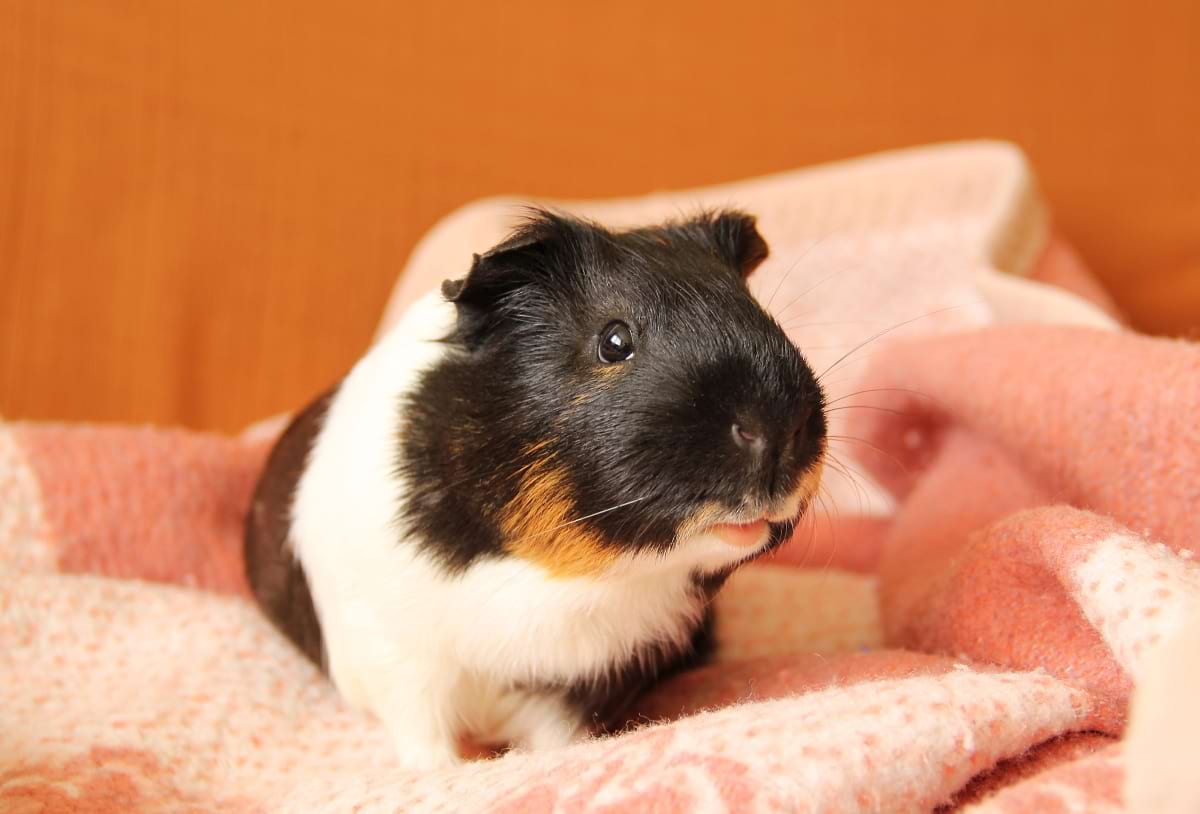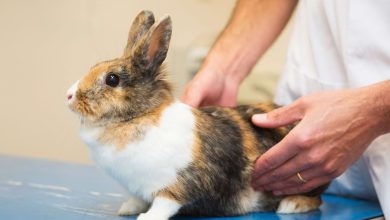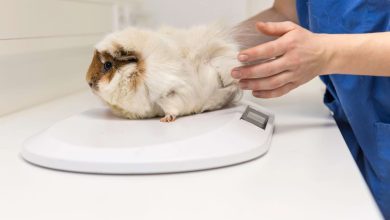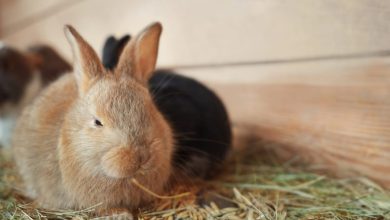Critical Care for Guinea Pigs: When & How to Use Recovery Food

Critical Care for guinea pigs is produced by Oxbow. It’s also a term used more broadly to refer to recovery foods, which are fed when guinea pigs are unwell and need more food moving through their gut. They’re also used to keep piggies from losing weight when they’re old or recovering from surgery or illness.
In this article, I’ll discuss everything there is to know about Critical Care, from what it is to how and when to feed it to your guinea pig.
What is Critical Care for Guinea Pigs?
Critical Care is an essential part of any guinea pig emergency kit. It’s a recovery food that can be syringe-fed to piggies who aren’t eating or who need more calories in their diet.
Critical Care is made by Oxbow, which is a vet-trusted brand for guinea pigs and other small pets. There are also other brands that make recovery foods, and you can make your own by mixing guinea pig pellets and warm water.
Why Critical Care Belongs in Your Emergency Kit
Guinea pigs can stop eating at any time. It’s a common symptom for piggies with dental issues, bloat, upper respiratory infections (URIs), and more.
The problem with this is that guinea pigs cannot go long without food–just 6-8 hours can put them into deadly gastrointestinal (GI) stasis. This is why Critical Care, or an alternative recovery food, should be in your guinea pig emergency kit at all times.
You don’t want to be struggling to find Critical Care in stores or waiting for it to ship when you really need it.
I also recommend keeping a couple of flavors for picky piggies. Some will dislike a specific flavor. Others may eat one flavor for a while, and then stop taking it as well. Switching to a new flavor can sometimes help in these cases.
How Do I Know if My Guinea Pig Needs Critical Care?

Weighing your guinea pigs weekly is one of the most important things you can do to monitor their health. If your guinea pig loses more than 100 grams, please make an appointment with your veterinarian as soon as possible.
In the meantime, it’s a good idea to feed critical care to ensure that they’re getting the nutrients they need and to hopefully prevent more weight loss.
Here are some reasons you might need to feed your guinea pig Critical Care:
- Sick guinea pigs who have stopped eating typically benefit from Critical Care to keep their guts moving and their weight up until you can get them to the vet. (Please look for a same-day appointment if at all possible, as refusing to eat is an emergency!)
- Sick guinea pigs who are eating less than usual can also benefit as Critical Care can help keep their weight up as they recover.
- Guinea pigs recovering from surgery can sometimes be less motivated to eat, and Critical Care can help them get the calories they need. If your piggy is acting differently after surgery, remember to talk to your vet about what you see!
- Senior guinea pigs who have lost weight may need more calories to keep their weight up, which Critical Care can help with.
- Anytime it’s recommended by your veterinarian. It’s important to consult with your veterinarian about feeding Critical Care, as you don’t want to be feeding too much of it or to a piggy who doesn’t need it. If you’re uncertain, it’s always best to make an appointment to discuss your concerns.
Please remember that while Critical Care can be lifesaving, it’s typically not the only treatment your guinea pig will need. It’s best used while waiting to see a vet or under their instructions, not as a replacement for veterinary care.
How to Use Critical Care
Use Critical Care and other recovery foods as recommended by your veterinarian or on the product label. Always follow your veterinarian’s instructions first, as they may vary from the written instructions on the product.
If you’ve forgotten what your vet recommended, please call and ask for confirmation. I’ve had to do this before since appointments with sick pets can be overwhelming, and in my experience, your vet truly doesn’t expect you to retain all of the information they give you the first time around.
How Much Critical Care to Feed a Guinea Pig
Oxbow’s Critical Care recommends feeding three tablespoons per kilogram of body weight, which is equal to 2.2 pounds or 1000 grams. Remember that this measurement is for the dry product, not the slurry after it’s been mixed with water.
This is also a daily measurement, but Oxbow recommends dividing it into 4-6 feedings a day. So, you might feed half a tablespoon of Critical Care six times a day to your 1000-gram guinea pig.
How to Prepare Critical Care
Only prepare one portion of critical care at a time, not the full daily amount. This is because you’ll need to throw away leftovers after each serving.
Once you’ve measured out the dry mixture into a small bowl, add two parts water to one part Critical Care and mix. For instance, when feeding one tablespoon of Critical Care, add two tablespoons of water. You can adjust the water if needed to get the right consistency.
Then, fill your 1 ml syringe with the mixture and feed it to your guinea pig. Repeat as needed until the serving is gone. (Remember to break their daily amount into multiple servings!)
How to Syringe Feed a Guinea Pig
After reading the above, you might be thinking: yes, but how do I syringe feed my guinea pig? Some piggies will latch onto the syringe with ease, but others need more coaxing. This can especially be true if they’re feeling unwell and don’t want to eat.
You can try dipping the end of the syringe in something your piggy loves, like a bit of piggy-safe baby food or their vitamin C supplement.
If this doesn’t work, you may need to gently hold your guinea pig and wrap them in a towel on your lap. This stops them from backing away as you bring the syringe to their mouth.
Do not lift your guinea pig’s front legs or turn them onto their backs. Instead, feed them upright with their feet touching the “floor” (or, in this case, your legs and the towel).
Angle the syringe behind your piggy’s incisors (their front teeth) and slowly release a tiny bit of Critical Care at a time. Wait for them to swallow before continuing to dispense more of the mixture.
Start by releasing just 0.05 ml. If your guinea pig takes this amount well, you can feed up to 0.2 ml at a time before pausing to let them chew and swallow. If the leftover mixture becomes too thick at any time, add water before continuing with the feeding.
Take care not to feed them too quickly, as this can cause problems such as your piggy inhaling, rather than swallowing, the Critical Care.
Also, remember that this isn’t force-feeding–your guinea pig has to voluntarily swallow the food in order for it to work. If your piggy isn’t chewing or swallowing, stop feeding Critical Care. Also stop if they cough, squeak, or otherwise seem distressed by the process.
If your guinea pig isn’t eating, and also refuses Critical Care, call your veterinarian immediately. This indicates an emergent health problem, and they should be brought in right away.
Weighing Your Guinea Pig After Feedings
When feeding Critical Care, you’ll likely want to weigh your guinea pig more often than usual. If they’re very sick and have a low appetite, I’d opt for daily weigh-ins.
This ensures that they’re gaining weight (or not losing it, depending on your goals). If they are losing weight, or not gaining as you and your vet would like, you may need to feed them more often or talk with your vet about other treatment options.
Don’t feed more than your vet or the product packaging recommends unless you consult with your vet first, as feeding too much Critical Care can be dangerous. You don’t want your piggy to develop bloat or other health problems.
Critical Care Alternatives
Critical Care is a brand by Oxbow, which is a vet-trusted brand for guinea pigs and other small pets. Many people call any kind of piggy recovery food Critical Care in the same way we call bandages Band-Aids or cotton swabs Q-tips.
There are also other brands that make recovery foods such as EmerAid, Sherwood, or Science Selective RecoveryPlus. Though I haven’t used any of these brands myself, I have heard from other piggy guardians that some guinea pigs who refuse Critical Care prefer the taste of EmerAid’s products.
You can even make your own recovery food by mixing small amounts of warm water into your guinea pigs’ everyday pellets and mixing until they become a pureed texture. This is typically recommended in emergencies when you don’t have recovery food on hand.
No matter which type of recovery food you choose to feed, it’s important to keep some ready for emergencies. There’s no way to control or plan for when your guinea pigs get sick–it could happen in the middle of the night, or on Sunday when your local vets aren’t open.
Learning how to use Critical Care or its alternatives before a crisis hits will also serve you well in an emergency so that you aren’t scrambling to learn last minute.



